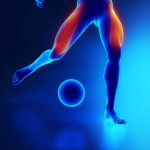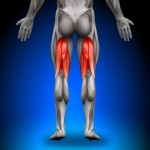Preventing & Healing Repetitive Strain Injuries – Part 1
Author: Julie Donnelly, LMT

Using the words “pain” and “free” in the same sentence causes people who love to exercise laugh since it seems to be a contradiction of terms, but it is not only possible, it’s easy to achieve. It is understood that exercising, or even just daily living, causes muscles to ache and will also put stress on joints.
When the pain begins you are told to use “RICE” (Rest, Ice, Compression, Elevation) – but you don’t have the time, or you simply don’t want to rest! So, you keep going and just as you’ve been told, it gets worse, even to the point where you may need to stop your world!
You’ve also come to realize that resting (when you do decide to rest) only lasts for a short time, and then the pain returns. The good news is you can be a pain-free; you just need to know how to find the source of your pain and then how to effectively treat it.
How Muscles Cause Joint Pain
RICE certainly works immediately after having a traumatic injury, but repetitive stress on your muscles requires treatment of the knots that are putting tension onto the tendons and joints. Getting back to basic anatomy will help to unravel the misconceptions that plague both athletes and non-athletes alike. Once you understand the logic of why you are feeling pain, you will know exactly what needs to be done to immediately release a muscle-related pain anywhere in your body.
This is NOT going to be a complicated lesson in Anatomy & Physiology, but I’ve found that a little knowledge of the body goes a long way. I’m going to put the proper names for the muscles and tendons into a parenthesis so if you want to actually see the muscles that are causing you pain you’ll be able to look them up.
I always tell the clients I work with “the most challenging part is finding where the source of the pain is located, and then treating it is easy”. This article will help you to find the source of your problem. Let’s begin at the beginning…
The Basics – How a Joint Moves
Movement is a simple process:
1. A muscle originates on a bone.
2. It then merges into a tendon.
3. The tendon crosses over the joint to insert into a movable bone.
4. When the muscle contracts it pulls on the tendon. The tendon then pulls on the moveable bone and your joint moves.
Example: The Muscles of Your Upper Leg

All joints have two (or more) muscles that determine the degree and angle that the joint will move. While one muscle is contracting, the other muscle must relax and stretch. A good example of this principle are the muscles of your upper leg. (quadriceps and hamstrings).
The quadriceps originate on the front of your hip (pelvis), merge into a thick tendon (patella tendon) and cross over the knee cap to insert onto the front of your shinbone (tibia). When they contract normally you fully extend your leg so it becomes straight. Meanwhile, your hamstrings originate on the lower edge at the back of your pelvis; go down the back of your thigh, with the tendons crossing over the back of your knee and inserting onto the back side/top of the lower leg bone.
Consider this analogy, if you attached your pants to the front of your shinbone, and then pulled up at the waist, you would feel the pressure at your knee and you also wouldn’t be able to bend your knee. Likewise, since your quadriceps originate up at the front of your pelvis and insert into your shinbone, when your quadriceps are tight they can’t stretch and you can’t bend your knee.
For example, to demonstrate an analogy of what tight hamstrings would do, consider what would happen if you bent your leg and then attached your pants to the bottom of your posterior pelvis (the bone you sit on, at the top of your thigh) and the back of your knee, you wouldn’t be able to open your leg up straight. But, clearly, you don’t have a knee problem, you have tightness in the upper thigh (hamstring) preventing your knee from moving.
When this has happened you begin to feel stiffness and a lack of your full strength. Some therapists will tell you that you need to strengthen your thigh (quadriceps) muscles. You may also think you need to stretch your hamstrings, but stretching a spasm is counter-productive and can actually make the spasm become more complicated while over-stretching the rest of the muscle fiber.
In Part II we’ll look at the first misconception – strengthening the muscle will heal the pain.
Julie Donnelly is an internationally respected muscular therapist specializing in the treatment of chronic pain and sports injuries. She has co-authored several self-treatment books, including The 15 Minute Back Pain Solution, Treat Yourself to Pain-Free Living and Carpal Tunnel Syndrome-What You Don’t Know CAN Hurt You. Julie is also the co-developer of TriggerPoint Yoga. She teaches Julstro self-treatment workshops nationwide and is a frequent presenter at Conventions and Seminars. Julie may be contacted through her websites: http://www.julstro.com and http://www.TriggerPointYoga.com.
© Julie Donnelly 2013
These statements have not been evaluated by the Food and Drug Administration. This information is not intended to diagnose, treat, cure or prevent any disease.
